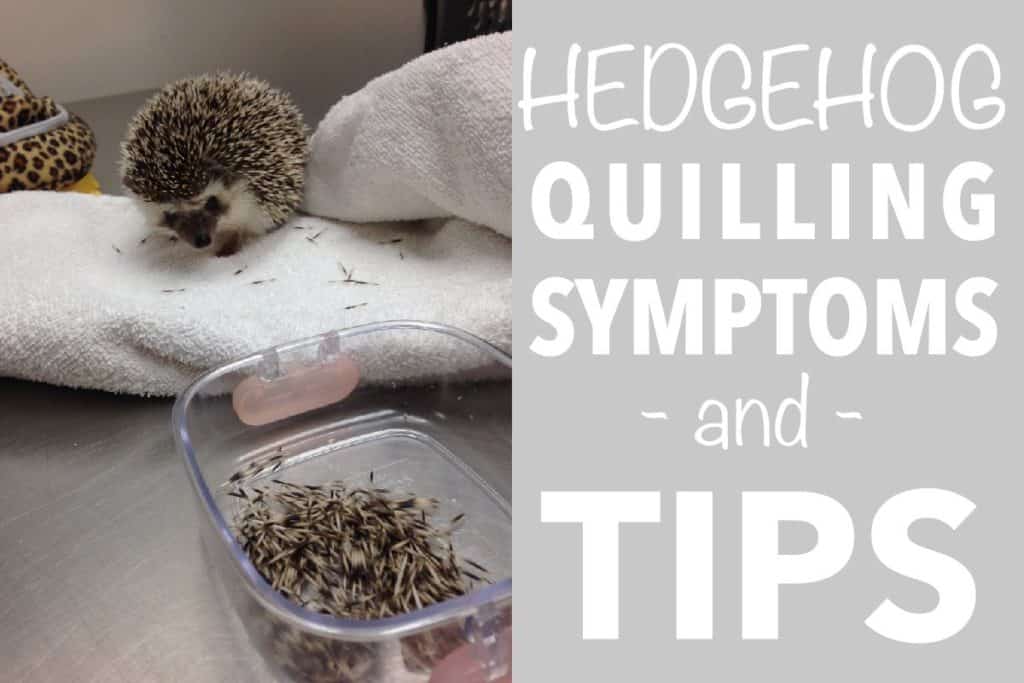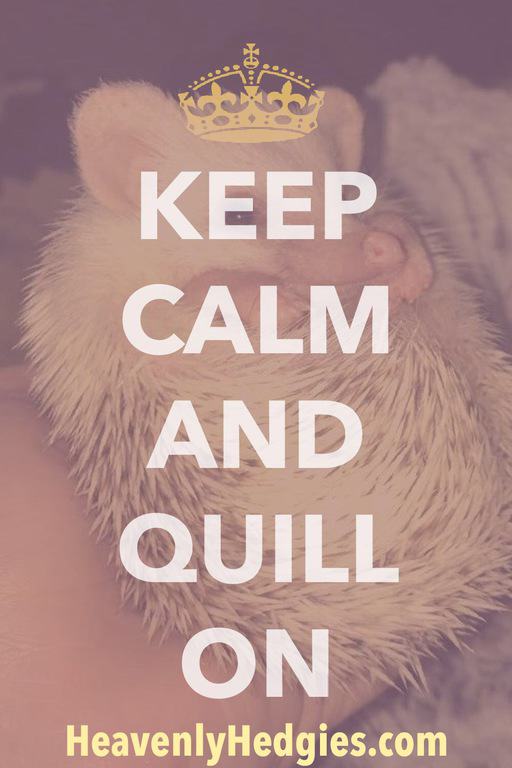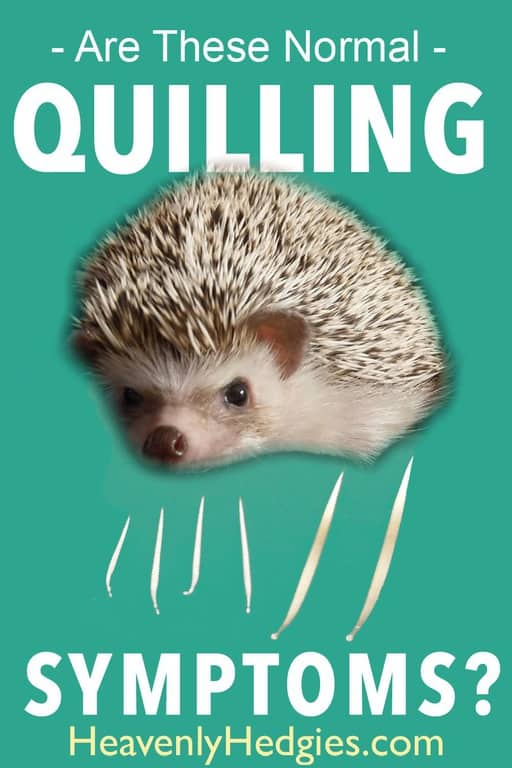Hedgehog quilling symptoms can be experienced at least once during the time you spend with your walking pin cushion. Even if you adopt an older hedgehog, you may wonder why your hedgie is dropping quills. Sometimes it is just normal spine shedding and not quilling. Quilling is a period in a young hedgehog's life when they become irritable and lose baby spines. During this time, they are re-growing adult sized ones. Keep in mind that they have between 5,000 and 7,000 spines so finding 30 or so isn't a lot. These new quills, or spines rather, are growing stronger and more fortified to protect them from enemies and falls. Read on to learn quilling symptoms, how to treat those symptoms, and any further steps you may need to take.
ACKNOWLEDGEMENT: The hedgehog in the feature picture is Hezekiah (aka Hezzie) from Toronto. His owner, Anna Kan, graciously granted us permission to use his picture. His quill loss turned out to be from a medical condition and not quilling. We would appreciate prayers for Hezzie as he recently underwent surgery for a cyst. Thank you Anna for letting us use his picture. Our prayers are with you too!
PLEASE READ: No advice should ever replace that of your trusted veterinarian trained in treating exotic animals. We encourage you to know all possibilities documented by previous hedgehog owners and professionals. This article is for you to have an informative starting point to understand hedgehog quilling. Use this article as a way to broach these topics with your vet regarding any health issues your hedgie may have. Please with your vet before administering any medications. No advice here or on this website can replace that of an educated, licensed, and trained professional.
AFFILIATE DISCLOSURE: Heavenly Hedgies is an Amazon Associate. We have partnered with them and other reputable merchants when they sell something that we feel will benefit our readers. By purchasing through our links, we may earn a small commission on sales, that helps us continue to provide informative and educational information for hedgie lovers. And the best part is that there is no additional cost to you. Thank you for being a loyal and supportive reader here at Heavenly Hedgies.
What Is Hedgehog Quilling?
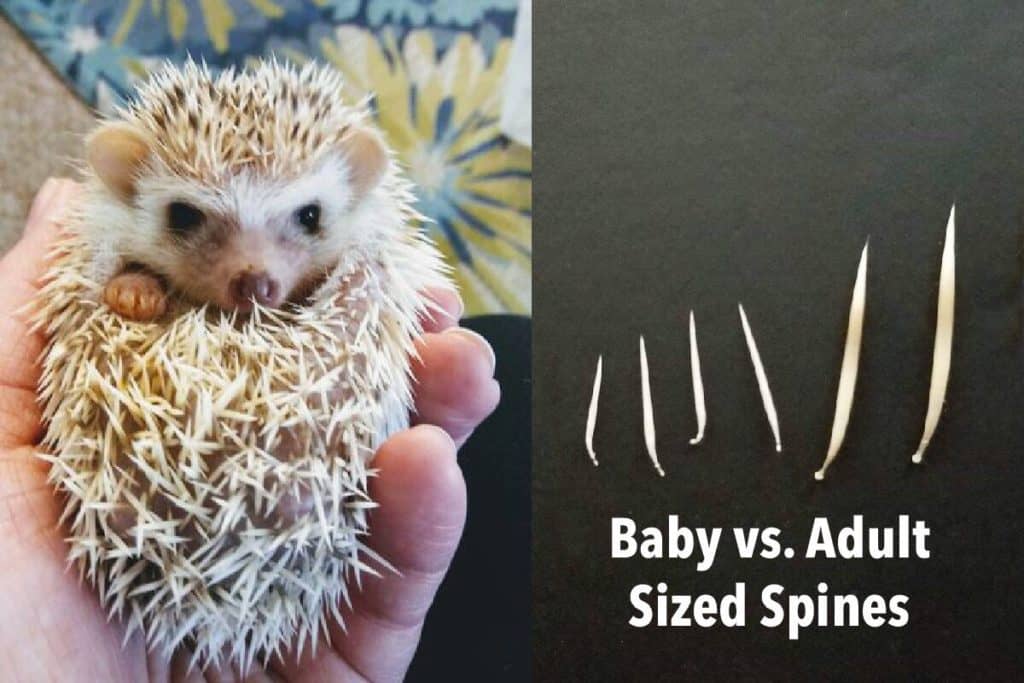
Normal Loss Of Baby Quills
Technically, these quills are actually called spines because they are hardened hairs full of keratin. Quills are hollow inside like on a porcupine, however, hedgehogs do not have quills. But still these two terms are used interchangeably and mean the spike defense mechanism on their backs. Quilling is a normal and necessary process within their first year of life. It usually lasts weeks or months depending on each individual hedgehog.
Do Hedgehog Spines Hurt Their Mother As They Are Born?
When they are born, baby hogs have about one hundred and fifty spines. The spines are soft and covered by a protective membrane so the mother is not harmed. On their first day of life, the membrane should shrink away, revealing the soft spikes underneath. But the spines are still soft and need to be replaced later by quilling.
When Do Hedgehogs Begin Quilling?
Around six to eight weeks they lose their soft baby quills to gain stronger ones. They usually quill again around four to six months, but don't be surprised if it happens a little past their first year. This is because they are growing fortified adult spines. The second quilling is reported to be much more painful. If your hedgehog is losing quills in large quantities that do not grow back within a week, this is abnormal and could mean a vet visit.
Indicators of Hedgehog Quilling Symptoms
The above handsome character was Mr. Bilbo, the African Pygmy Hedgehog. He seemed to never be happy, so imagine him during his quilling phase!
Will Hedgehog Quilling Symptoms Change Their Behavior?
One day your friendly wormie-treat-eating pal will be racing towards you, the next day they could be huffing at you; hiding and irritated by your presence. This could be the start of hedgehog quilling symptoms, or just someone is having a bad hedgehog day. If you notice the quills have fallen out and are starting to grow back, you know this could be quilling. If there is a tiny ball on the end of the lost quills, this is a good healthy indicator. As is the appearance of generally healthy skin aside from some minor dermatitis.
What Is Normal Quill Loss And Growth?
With regular hedgehog quilling symptoms. their spines fall out and you will find them laying around. And this doesn't just happen before the one year mark or a little bit past it. Just like any other mammal, they could shed one or two quills here and there throughout their life time. New quills should begin to form within a few days with normal quilling. Sometimes extremely dry skin, fungal infections, or stressful environments can slow down or stop quills from growing back. Also, be on the look out for in-grown quills, if those appear you'll see proof of the quill trying to make its way through the skin. Usually this looks like a red bump with the end of a quill trying to poke out of the epidermis. These usually work themselves out, but sometimes you may need to nudge out the stubborn ones. Try to carefully use sterilized tweezers and pull it out, you'll most likely reveal a curved quill. When done, apply some anti-bacterial ointment with a cotton swab. If you are uncomfortable doing this yourself, your veterinarian is always the best professional to contact.
Dry Flaky Skin
The high emotional and physical stress level during this time causes double the skin irritations. Hedgehog owners report that adding a humidifier to their room helps significantly. We recommend that you raise the humidity level to read about 40% on your hygrometer, increasing slowly if necessary. A concerned hedgehog parent will always wonder, “Is this normal?”. If your hedgie's quills are growing back and their skin is just dry and flaky, then yes it is normal. Comfort is key to battling this condition, and here are some other tips we recommend:
- Place oatmeal inside a sock. Fill up the sink with room temperature water and soak the oatmeal-filled sock in the water. Next squeeze the oatmeal-infused water out of the sock and remove. Place hedgie inside the water and use a cup to gently pour water over him. Use a soft or medium bristle toothbrush and stroke the same way the quills grow to clean as usual.
- Put organic coconut oil in their food and NEVER directly on them.
- Utilize South African Grown Red Roobios tea in their bath water, this removes all the dead skin and promotes quill re-growth.
- Products like Nik's Moisturizing Skin Oil, organic foaming soap, and moisturizing milky bath soap are 100% safe, used, and recommended by experienced breeders.
How Do I Care For My Quilling Hedgehog?
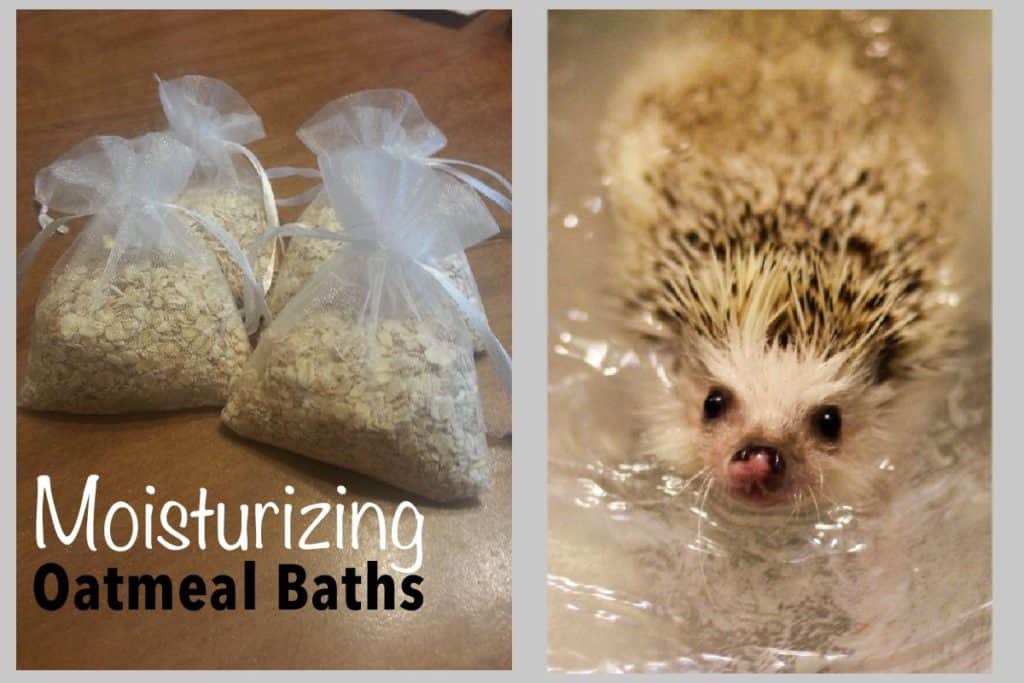
If you've ever suffered from a painful pimple, hangnail, or ingrown hair, you know it hurts and is a little distressing. Hopefully you can empathize based on some of your own experiences. Here are some tips to rely on during this sore and uncomfortable phase:
- Continue to handle your hedgie with patience and let them roam
- Avoid touching the quills except to softly brush them; try to only touch the belly
- Make sure his cage temperature is comfortable for your hog. You may need to up it to around 80°F and add humidity
- Provide new treats like maybe a juicy butterworm or a familiar speedy dubia roach to hunt
- Add some new elements to their cage so they explore and are distracted from the pain
- Explore the benefits of CBD oil for pets. Use a safe, weight-based dosage (recommended by the manufacturer) and unless advised by a qualified medical practitioner, only put it in the bath water rather than directly to the skin. You may also add 1 or 2 drops to their food or inside of their mouths. In many cases, it helps with hedgehog discomfort and anxiety, plus it can help correct any pH imbalances of the skin by encouraging the improvement and protection of skin, fur, and quills.
Quilling Or Something Else?

Skin and Quill Loss Appearance
Usually with mites or ring worms, the skin will appear dry and flaky too. And, the fallen quills will not look as they should; they may appear to have a mushy or broken end. Your hedgie should never have bald spots for long, signs of new growth should be present within a week. Skin that appears red, bumpy, or gooey deserves professional expert medical attention if you cannot control it. With normal hedgehog quilling symptoms, the skin appears healthy underneath the dry skin and the spines should be growing back nicely.
Can I Detect Mites On My Own?
A pocket microscope with LED that is about 60x-100x magnification power can be useful to detect mites. Wipe off some of the white flakes, place them on a dark surface and see if they move (using your eye or your microscope). Always see an experienced vet though. If the treatment prescribed by your vet is not working or you feel they may have misdiagnosed your hedgie, follow your instincts and seek a second opinion from a different vet.
Medicated & Non-Medicated Solutions For Dry Skin
Hedgehogs require sensitive products that a mother would only want her human baby using. As time goes on and if the hedgehog's skin gets worse, sometimes medicated products need to be prescribed. Before using anything medicated on your hedgie, please seek the advice of a professional. Your vet may want to do a skin scrape sample if the epidermis appears concerning. The following products have been recommended to help with dry skin and skin infections:
- Universal Medicated Shampoo
- Aveeno® Baby Shampoo for Eczema
- Holistapet Pet Tincures drops made from hemp for small pets – given orally or with food
- Nik's Moisturizing Skin Oil
Concluding Our Article On Hedgehog Quilling Symptoms
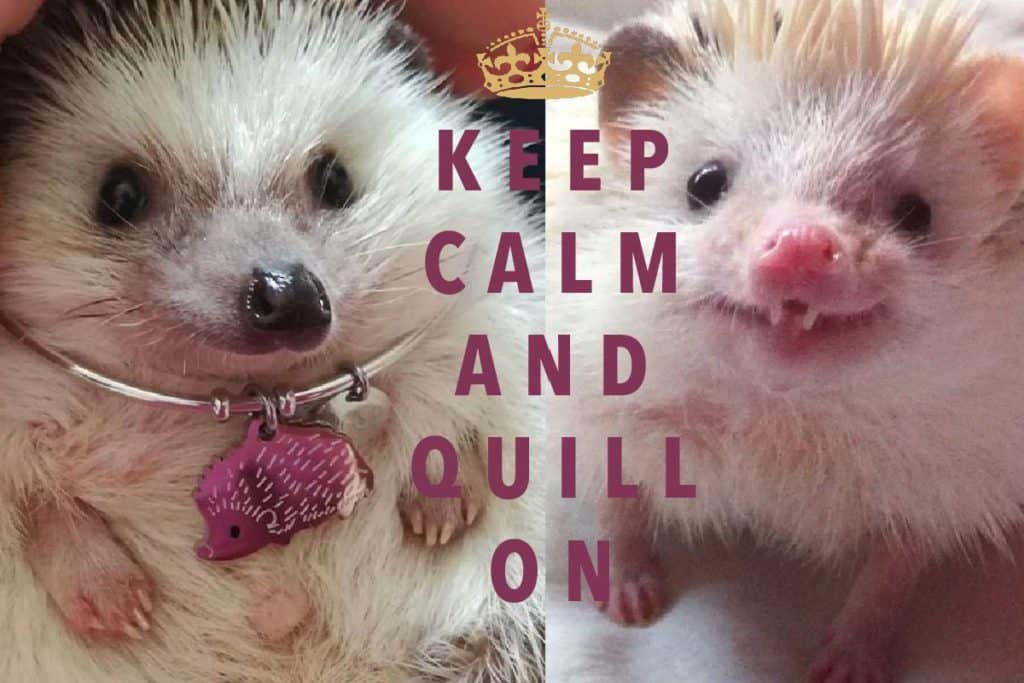
Every hedgehog experiences quilling differently. And when quilling symptoms arise, avoid touching your hedgie's back side and continue to pick them up from the belly. Skin will likely appear dry and itchy at first. Red or bumpy skin where quills are not growing back could indicate a need to visit your vet. Using organic products such as oatmeal, coconut oil, or CBD oil may increase their comfort level and lower their anxiety. Make sure the cage temperature and humidity levels in their environment are set optimally. We hope our suggestions provided in this quill loss article have been helpful. This is a journey you are facing together with your spine shedding friend. We hope you do not take any huffing from your hedgie personally. And please remember, keep calm and quill on.
Hedgehog Quills Fun Fact:A hedgie's quills/spines can absorb up to 11% of its weight in water.
~animaldiversity.org
Recommended Continued Reading:
Do you have your hedgehog's cage temperature set up properly? Find out here what the recommended cage temperature range is and how to properly set up your CHE.
Want to check your hedgehog knowledge and see if you knew these things listed on our hedgehog care sheet?
Do you have a question you don't see on our site yet, but would like answered? Quilly, our animated hedgehog, would LOVE to answer any hedgehog related questions you have. Check him out here!
